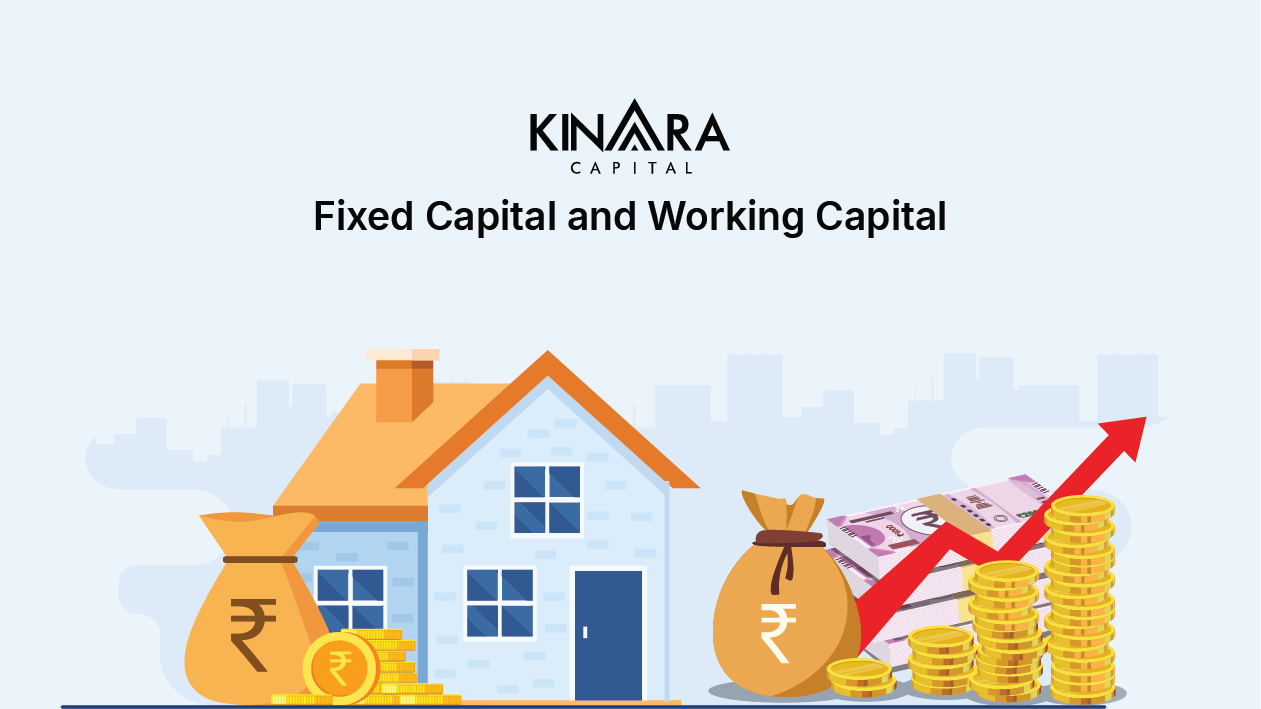
Running a business is like juggling and working capital keeps the balls in the air, while fixed capital sets up the stage! Working capital covers everyday expenses like salaries, rent, and inventory, ensuring smooth operations. Fixed capital, on the other hand, is all about long-term investments—think machinery, equipment, or office space. Both are essential, with one keeping things moving daily and the other building a solid foundation for future growth. Together, they strike the perfect balance for business success!
Fixed capital refers to the long-term assets or investments that a business acquires to support its operations over an extended period. These assets are not consumed in daily operations but are essential for sustaining production and providing infrastructure. Fixed capital is a critical component for businesses looking to establish and maintain operational efficiency.
Examples of fixed capital include machinery, buildings and construction equipment. For instance, a manufacturing company may invest in heavy machinery to produce goods, or a logistics business might purchase trucks to facilitate transportation. Office furniture, technology infrastructure, and tools required for production also fall under fixed capital. These assets remain with the company for many years, contributing to operations without frequent replacement.
The key aspect of fixed capital is that these assets are not meant to be sold or converted into cash within a short period. Instead, they help businesses create a solid base for long-term operations. Investing in fixed capital allows companies to increase production capacity, improve efficiency, and create better working conditions.
Although closely related to working capital, fixed capital serves a distinct purpose. Where fixed capital provides the assets necessary for operations, working capital focuses on meeting the immediate expenses required to keep the business running smoothly. This balance between fixed and working capital ensures the overall success and sustainability of any business.
Working capital refers to the funds required for a business’s day-to-day operations, ensuring smooth cash flow to manage short-term expenses. It is calculated by subtracting current liabilities from current assets, providing a snapshot of a business’s liquidity and ability to meet immediate financial obligations.
Examples of working capital include cash in hand, accounts receivable (money owed by customers), and inventory. For instance, a retail business may use working capital to stock products, pay employees, or cover rent and utility bills. Similarly, a manufacturer might use it to buy raw materials and cover production costs until finished goods are sold.
Business working capital is essential to maintain operational continuity, especially during periods of fluctuating cash flow. Businesses often need working capital to bridge gaps between paying suppliers and receiving payments from customers. In industries with seasonal demand, like tourism or retail, working capital helps manage off-season expenses without disrupting operations.
Working capital ensures that businesses can respond to unexpected challenges, such as delays in payments or sudden rises in costs. A positive working capital position indicates that the company can handle its short-term obligations comfortably, while a negative position may signal potential liquidity issues.
By effectively managing working capital, businesses can maintain stability, avoid cash crunches, and ensure long-term growth.
When it comes to business finances, understanding the difference between fixed capital and working capital is crucial for sustainable growth. Both serve distinct purposes in managing operations and investments. However, while one fuels long-term needs, the other ensures smooth daily functioning.
Fixed capital refers to the funds invested in long-term assets that remain within the business for an extended period. These include tangible and intangible assets like machinery, land, buildings, patents, or software. The value of these assets does not change quickly, and they are used to generate revenue over time. Investments in fixed capital are more strategic and often require significant financial commitment upfront.
On the other hand, working capital and fixed capital differ in terms of liquidity and purpose. Working capital covers short-term financial needs like wages, utility bills, or raw materials. It ensures the business can continue operations without interruption by meeting current liabilities. Think of working capital as the funds that keep the engine running smoothly every day.
When looking at fixed capital vs working capital, another key distinction is how easily they are converted into cash. While working capital assets like inventory and receivables can turn into cash relatively quickly, fixed assets are not intended to be sold in the short term.
Businesses manage both types differently; while calculating working capital helps gauge short-term liquidity, fixed capital investments require strategic planning for long-term stability. Striking the right balance between the two ensures that businesses can grow while remaining agile in daily operations.
Kinara Capital stands out as the ideal choice for a working capital loan due to its commitment to empowering MSMEs with tailored financial solutions. We offer quick and hassle-free application processes, ensuring that funds are disbursed promptly, allowing businesses to seize opportunities without delay. Our Working Capital Loans can also be availed by Women entrepreneurs who can get benefits like:
Our unsecured business loan options eliminate the need for collateral, making it easier for entrepreneurs to access essential capital. With flexible repayment terms and dedicated support, Kinara Capital is your trusted partner in navigating the financial landscape and driving your business towards sustained growth and success. Choose us for a seamless borrowing experience!
In the grand tapestry of business finance, understanding the roles of fixed and working capital is crucial for any MSME owner. As a quick recap, we should till now be clear that while fixed capital lays the sturdy foundation for your operations, working capital fuels your day-to-day activities and growth.
Both are vital for maintaining a healthy business ecosystem. By mastering these concepts, you can navigate financial waters with confidence and ensure your enterprise not only survives but thrives. So, let’s get those financial gears turning and watch your business dreams take flight!
Fixed capital is essential for a business as it enables long-term investment in assets like machinery and buildings, ensuring operational efficiency. It provides stability and supports growth, allowing businesses to expand and adapt to market demands.
A business cannot effectively operate without fixed capital, as it requires tangible assets for production and service delivery. Without these foundational investments, operational efficiency and long-term growth potential are severely compromised, limiting overall success.
Management of fixed capital focuses on long-term investments in assets like machinery and property, ensuring sustainability. In contrast, working capital management emphasizes short-term financial health, monitoring cash flow to meet daily operational needs and obligations efficiently.
Working capital directly influences a company’s financial stability by ensuring it can cover short-term liabilities, maintain smooth operations, and invest in growth opportunities. Adequate working capital helps prevent cash flow issues and supports overall business health.
Industries such as manufacturing, construction, and telecommunications require more fixed capital due to significant investments in machinery, equipment, and infrastructure. These sectors often involve high upfront costs for assets that generate long-term returns.
